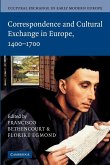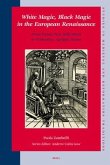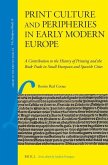This book, first published in 2005, opens up the much neglected area of the black African presence in Western Europe during the Renaissance. Covering history, literature, art history and anthropology, it investigates a whole range of black African experience and representation across Renaissance Europe, from various types of slavery to black musicians and dancers, from real and symbolic Africans at court to the view of the Catholic Church, and from writers of African descent to black African 'criminality'. The main purpose of the collection is to show the variety and complexity of black African life in fifteenth- and sixteenth-century Europe, and how it was affected by firmly held preconceptions relating to the African continent and its inhabitants. Of enormous importance for both European and American history, this book mixes empirical material and theoretical approaches, and addresses such issues as stereotypes, changing black African identity, and cultural representation in art and literature.
'At each turn of the page, Black Africans in Renaissance Europe unravels some of the intrigues and hidden nuggets captured in the literature and artwork of the Renaissance period about black Africans. With the inclusion of a wealth of drawings, paintings, Latin, Italian and Portuguese texts of poetry, letters and inscriptions, it is impossible to do the book justice in a mere review.' Runnymede's Quarterly Bulletin








